- Home
- Prelims
- Mains
- Current Affairs
- Study Materials
- Test Series
 EDITORIALS & ARTICLES
EDITORIALS & ARTICLES
20th Nov 2021
ONLY 1032 DOUBTFUL CASES FROM NRC REFERRED FOR FURTHER ACTION
Over a thousand doubtful cases in the final draft of the National Register of Citizens (NRC), Assam have been referred further for necessary action.
National Register of Citizens:
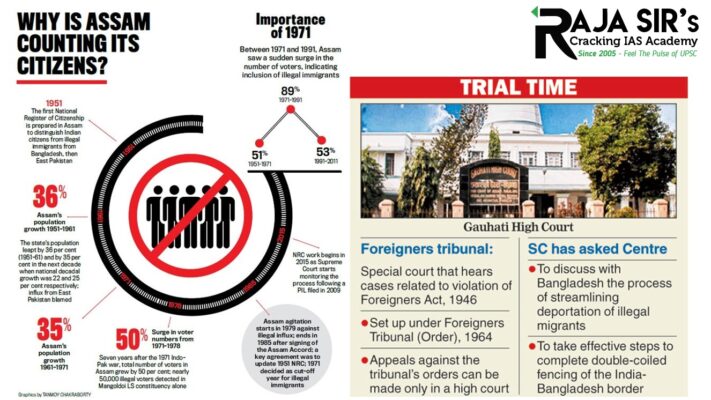
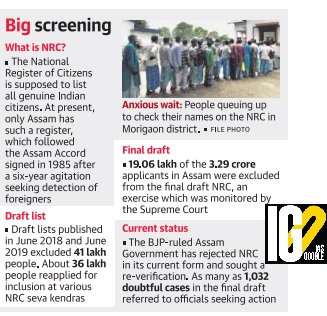
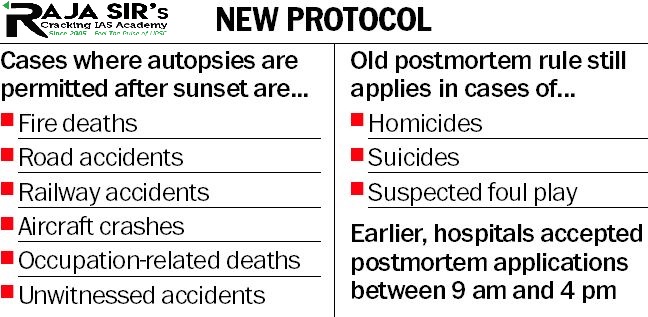

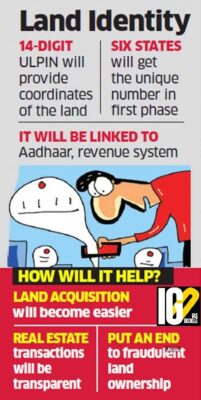
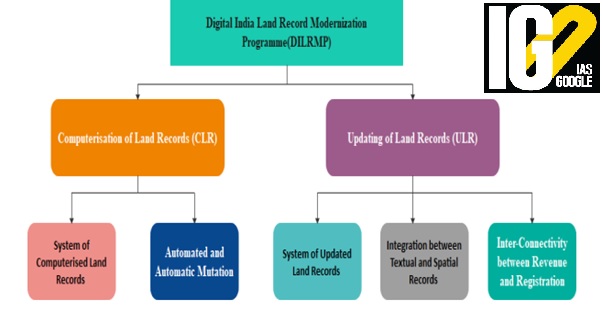


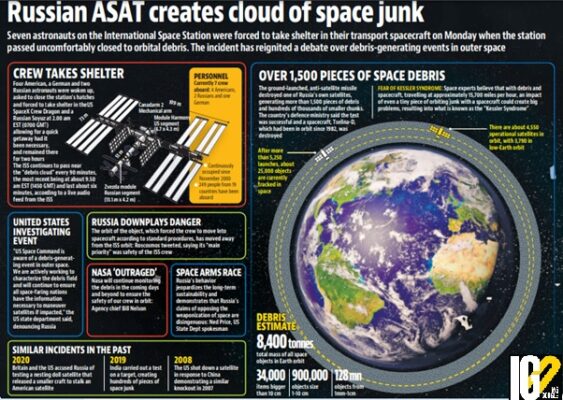

- The National Register of Citizens (NRC) is an exercise by the Indian government to recognise and expel illegal immigrants from Bangladesh and recognize the Indian citizens in Assam.
- It is pursuant to the Citizenship Act, 1955 read with the Foreigners Act, 1946.
- The government implemented the NRC in the north-eastern state of Assam, bordering Bangladesh.
- Assam is the only state to have an NRC, first prepared in 1951 and finally updated in 2019.
- UN World Migration Report 2020has identified border between Assam and Bangladesh as one of the most vulnerable migrant corridors in Asia, given the historical fluidity of its boundaries.
- The exercise is a culmination of Assam Accord of 1985signed between the Centre and the All-Assam Students’ Union (AASU).
- The categorization of citizenship status considers every resident of Assam guilty until proven innocent.

- 1971: Bangladesh gained independence from Pakistan. The liberation war led to a massive influx of migrants to India until 1983.
- 1983: Parliament enacted the Illegal Migrants (Determination by Tribunal) Act (IMDT Act) which laid down the procedure to detect illegal immigrants from Bangladesh and expel them from Assam.
- This Act was applicable to only Assam, while the Foreigners Act, 1946 was applicable to all other states.
- 1985: Assam Movement against illegal immigration led to the historic Assam Accord of 1985.
- 2005: IMDT Act made it difficult to deport illegal immigrants. Hence, it was held unconstitutional by the Supreme Court in Sarbananda Sonowal case in 2005.
- In the Sonowal case, the court considered classification based on geographical considerations to be a violation of the right to equality under Article 14.
- 2007: This was eventually replaced with the Foreigners (Tribunals of Assam) Order, 2006, which again was struck down in 2007.
- Each rejected person under NRC, can approach the Foreign Tribunals (FTs) within 120 days of receiving the rejection slips.
- The decision of FT can be further challenged in High Court and then in the Supreme Court.
- Foreigners’ Tribunals are quasi-judicial bodies established as per the Foreigners’ Tribunal Order, 1964 and the Foreigners’ Act, 1946.
- Powers of Tribunal
- The Tribunal shall have the powers of a civil court while trying a suit under the Code of Civil Procedure, 1908.
- The Tribunal can summon and ask for the attendance of any person and examine him/her on oath.
- It can ask anyone to produce the required documents.
- It can commission examining any witness, as and when required.
- Article 326of the Constitution states that voting rights are available only to citizens.
- Those excluded from the list shall be categorized as ‘D’ (doubtful) voters.
- The evidentiary value of proof of citizenship is tilted highly in favor of patrilineal documents, therefore women who trace their identity matrilineally are invariably excluded.
- Women are arbitrarily left out of the list due to trivial reasons such as typographical errors.
- Children are left out of the list even after their parents’ inclusion.
- As the onus of proof is on the citizen, people are forced to sell their small land and cattle holdings to fund themselves to gather the report and submit to the far-reaching government centers.
- The agreement between the Centre and All Assam Students Union (AASU) is called the Assam Accord.
- Under Assam Accord of 1985, foreigners who had entered Assam before March 25, 1971were to be given citizenship.
- It was signed on the Independence Day in 1985.
- In the 15 clauses of the Assam Accord, the key focus areas were:
- Foreigner's issue
- Economic development
- Restricting acquisition of immovable property by foreigners
- Prevention encroachment of government lands
- Registration of births and deaths
- Objective:
- To ensure protection of political, social, economic and cultural identity of the local people.

- Before this procedure, autopsies were performed before sunset, and only procedures that received special permission by the law enforcement agencies could be carried out at night.
- It will enable the faster release of bodies to harvest organs for transplant surgeries.
- It will promote ease of living by reducing burden imposed due to compliance to government processes.
- Organ donation in India is regulated by the Transplantation of Human Organs and Tissues Act, 1994.
- The act aims to control the removal, storage, and transplantation of organs and prevents any commercial dealings
- The law allows both deceased and living donors to donate their organs.
- It also identifies brain death as a form of death.
- The National Organ and Tissue Transplant Organisation (NOTTO) functions as the apex body for activities of relating to procurement, allotment and distribution of organs in the country.
- Organ donation rates in India sit at 01percent.
- Croatia has the highest organ donation rate 36.5 percent.
- Lack of awareness
- Spiritual belief of life after death
- General negative attitudes towards organ donation.
- In 2019, the Government of India implemented the National Organ Transplant Programme with a budget of ₹149.5 crore for promoting deceased organ donation.
- The ethical basis of donation is in
- The donor may be ill informed about the procedure and the consequences or maybe forced to give his/her consent in return of financial gains.
- The use of living donors as volunteers, including minors, have become a concern.
- It has also led to the practice of organ sale by entrepreneurs for financial gains in some parts the world through exploitation of the poor, for the benefit of the wealthy.
- In many cases, organ allocation was done on the basis of social, financial or political status instead of the medical criteria and on the need of the patient.
- The ethics of using tissues and organs from fetuses have been a matter of enormous discussion.
- Collection and sale of fetal tissue by corporations is known to occur.

- The day marks the presence of an independent and responsible press in India.
- The media is known as the fourth pillar of democracy.
- This day symbolizes freedom of the press and its responsibilities towards society.
- The Press Council of India started functioning on this day.
- PCI was established under Press Council Act of 1978.
- It is the highest body to maintain the standards of the Print Media in India.
- It serves as the regulator that discharges professional standards for print media in India.
- Aim: To preserve the freedom, regulate and enhance the standards of the press in India.
- It keeps a check on newspapers that can maintain their independence.
- Set up a code of conduct for the journalists to maintain high professional standards.
- To foster technical and other research areas concerning news.
- Ensuring high standards of news for public.
- It promotes responsibility among citizens.
- Freedom of press is not specifically mentioned in article 19(1) (a) of the Constitution.
- Romesh Thappar v. State of Madras (1950): SC observed that freedom of the press lay at the foundation of all democratic organisations.
- It is a government owned mineral producer.
- It works under the administrative control of Ministry of Steel.
- Head Office- Hyderabad
- It is involved in the exploration of iron ore, copper, rock phosphate, limestone, dolomite, gypsum, bentonite, magnesite, diamond, tin, tungsten, graphite.
- Aim:
- To emerge as a global Environment friendly Mining Organization and also as a quality Steel producer with a positive thrust on Social Development
- Mission:
- To maintain its leadership as the largest iron ore producer in India
- Expanding business by acquiring and operating various mineral assets
- Rendering optimum satisfaction to all its stake holders
- To expand the operations in the areas of Mining and Mineral Processing.
- To achieve international standards in per capita productivity, value addition and cost effectiveness.
- To increase the iron ore production capacity to 67(Million Tonne Per Annum) MTPA by FY 2025.
- Achieve growth by:
- Expansion of existing mines
- Operating new mines fully owned by NMDC or in Joint Venture
- To maintain environment protection.
- To conserve mineral resources through scientific mining.
- To maintain high level of customer satisfaction.
- The ministry also launched National Generic Document Registration System (NGDRS) portal and Dashboard.

- ULPIN is a 14-digit Alpha–Numeric Unique ID for each land parcel.
- It is like the Aadhaar Number of land parcels.
- In this, a unique ID based on Geo-coordinates of the parcels is generated and assigned to the plots.
- It will share the computerized digital land record data among different States/Sectors and provides a uniform system of assigning a unique ID to the land parcel across the country.
- The system will help in reducing land disputes in the country.
- It will enhance the service deliveries to the citizens.
- Information from ULPIN will function as inputs to the schemes of the other sectors like Agriculture, Finance Disaster Management etc.
- Digital India Land Records Modernization Programme (DILRMP) was established in 2008 by Government of India.

- To usher in a system of updated land records, automated and automatic mutation.
- Integration between textual and spatial records, inter-connectivity between revenue and registration.
- To replace the present deeds registration.
- Computerization of land record
- Survey/re-survey
- Computerization of Registration.
- Real-time land ownership records will be available to the citizen.
- Property owners will have free access to their records without any compromise regarding confidentiality of the information.
- Free accessibility to the records will reduce interface between the citizen and the Government functionaries, thereby reducing rent seeking.
- Public-private partnership (PPP) mode of service delivery will reduce citizen interface with Govt.
- Abolition of stamp papers, payment of stamp duty and registration fees through banks, etc. will reduce interface with the Registration machinery.
- With use of IT inter linkages; the time for obtaining Rate of Return will be reduced.

- NGDRS is a project initiated by the Government of India.
- It is a common, application developed for registration departments across the country.
- To act as One Nation One Software for registration of properties and document across the country.
- Citizen empowerment by enabling property valuation and online document submission.
- A single platform of all the stakeholders in registration process.
- Facility for online document entry for citizens.
- Role based access to citizens and department users.
- E KYC – UID based authentication with the help of biometric at the time of admission.
- Linking with land records system.
- Storage of copy of registered documents using scanning technology.
- Unicode based local language support.
- Number of people using tobacco globally decreased and is expected to decrease more by 2025.
- There are 1.30 billion tobacco users globally, compared to 1.32 billion in 2015.
- This number is expected to drop to 1.27 billion by 2025.
- In 2020, 3%of the global population used tobacco, 36.7% of all men and 7.8% of the world’s women.
- Trend in South East Asia: It has the highest rates of tobacco use (432 million users or 29% of its population).
- However, this is also the region where tobacco use is declining fastest.
- One of the most effective tools for reducing tobacco use was taxation.
- However, the illegal tobacco trade has undermined the taxation policies.
- Illegal tobacco trade is a threat to public health as it increases access to often cheaper tobacco products.
- Illicit Trade in Tobacco Products (ITP) came into force on September 25, 2018.
- It is the first legally binding instrument adopted under the Framework Convention on Tobacco Control (FCTC)and aims to be a co-ordinated international response to the problem of illicit tobacco trade.
- Tobacco, common name of the plant Nicotiana tabacum, is a cured leaf that is used, for smoking, snuffing, and extraction of nicotine.
- It is one of the most economically significant agricultural crops in the world.
- About 15 states in India grow tobacco, significantly influencing the economy and prosperity of the farming community.
- The production and processing costs of tobacco are also quite low in India, thus making the Indian tobacco price-competitive and value for money.
- It is a drought tolerant, hardy and short duration crop which can be grown on soils where other crops cannot be cultivated profitably.
- Tobacco cultivation in India was introduced by Portuguese in 1605.
- Major producers: Andhra Pradesh, Gujarat, Karnataka, Uttar Pradesh and Bihar.
- Gujarat accounts for 45 % of the area (0.13 M ha) and 30 per cent of production (0.16 M t).
- Productivity is also highest (1700 kg ha-1) in Gujarat followed by AP.
- India stands second in tobacco production and exports in the world.
- Unique feature of tobacco production in India is that varied styles of Flue-cured Virginia (FCV) and different types of non-FCV tobacco are produced under diverse Agro-ecological situations spread all over the country.
- Climate: Though tobacco is tropical in origin, it is grown throughout the world.
- In India, tobacco is grown when the mean temperature is 20° to 27°C.
- When grown as rainfed crop, it requires at least about 500 mm of well distributed rainfall during crop growing season.
- It is not usually grown where rainfall exceeds 1200 mm during the season.
- Soil: Generally, tobacco nurseries are grown on sandy or sandy loam soil.
- The cigarette-tobacco growing areas of Andhra Pradesh are an exception in that the crop is grown on a heavy black soil.
- Raising of nurseries on heavy black soils is hazardous due to poor internal drainage caused by high clay co
- The cigarette-tobacco growing areas of Andhra Pradesh are an exception in that the crop is grown on a heavy black soil.
- According to the Global Adult Tobacco Survey (GATS) conducted in 2016–17, the overall prevalence of smoking tobacco use is 10.38% and smokeless tobacco use is 21.38% in India.
- The most prevalent form of tobacco use in India is smokeless tobacco and commonly used products are khaini, gutkha, betel quid with tobacco and zarda.
- Tobacco use is a major risk factor for many chronic diseases, including cancer, lung disease, cardiovascular disease and stroke.
- It is one of the major causes of death and disease in India and accounts for nearly 1.35 million deaths every year.
- India is the second largest consumer and producer of tobacco.
- Government of India enacted comprehensive tobacco control legislation (COTPA, 2003).
- India was among the first few countries to ratify WHO the Framework Convention on Tobacco Control (WHO FCTC) in 2004.
- FCTC enlists key strategies for reduction in demand and reduction in supply of tobacco.
- The National Tobacco Control Programme was piloted during the 11th Five Year Plan which is under implementation in 42 districts of 21 states in the country.
- The Global Adult Tobacco Survey (GATS)was also undertaken as part of NTCP
- It was the first ever dedicated household survey to study the prevalence of tobacco use among adults, exposure to second hand smoke, cessation and other tobacco related indicators in the country.
- India has actively contributed to drafting of guidelines as a member of the Inter Government Negotiating Body (INB) to curb the illicit trade of tobacco products.

- The study was conducted by Global Research on Antimicrobial Resistance (GRAM)
- The study provides a comparative analysis of total antibiotic consumption rates in humans globally, expressed in the WHO metric of defined daily doses (DDD) per 1,000 population per day.
- GRAM is the flagship project of the Oxford Global Burden of Disease (GBD) Group.
- Aim: To provide robust, comprehensive and timely evidence of the burden of antimicrobial resistance (AMR) globally.
- Antimicrobial resistance (AMR) is the ability of microorganisms to persist or grow in the presence of drugs designed to inhibit or kill them.
- The drugs, called antimicrobials, are used to treat infectious diseases caused by microorganisms such as bacteria, fungi, viruses and protozoan parasites.
- AMR occurs when bacteria, viruses, fungi and parasites change over time and no longer respond to medicines making infections harder to treat and increasing the risk of disease spread, severe illness and death.
- Microorganisms that develop antimicrobial resistance are sometimes referred to as “superbugs”.
- As a result, the medicines become ineffective and infections persist in the body, increasing the risk of spread to others.
- AMR is a global health and development threat.
- It requires urgent multisectoral action in order to achieve the Sustainable Development Goals (SDGs).
- Lack of clean water and sanitation and inadequate infection prevention and control promotes the spread of microbes, some of which can be resistant to antimicrobial treatment.
- Injudicious use of antimicrobials and inadequate treatment of waste waters are important drivers of AMR in India.
- The major sources are the pharmaceutical waste waters and hospital effluents that are released into the nearby water bodies without adequate treatment.
- Lack of awareness about infectious diseases in the general masses and inaccessibility to healthcare
- Self-prescription of antimicrobial agents without any professional knowledge regarding the dose and duration of treatment
- Misuse and overuse of antimicrobials are the main drivers in the development of drug-resistant pathogens.
- The use of antimicrobial agents as pesticides and insecticides in the agriculture industry.
- India has been referred to as the AMR capital of the world, still fighting against diseases which has become drug-resistant.
- India has one of the highest rates of resistance to antimicrobial agents used both in humans and food animals.
- Factors such as poverty, illiteracy, overcrowding and malnutrition further compound the situation.
- The infectious disease burden in India is among the highest in the world.
- In the fight against AMR in India, it is important to realize the contribution by all the following four spheres: humans, animals, food and environment.
- This review incorporates all the spheres of One Health concept from the Indian perspective.
- It highlights the importance of inter-dependence of human, animal and environmental parameters for the containment of AMR.
- Alexander the Great, also known as Alexander III was born in 356 BCE, in Macedonia.
- He became the king of Macedonia (336–323 BCE) by defeating Persian empire.
- He carried Macedonian arms to India, and laid the foundations for the Hellenistic world of territorial kingdoms.
- Alexander was referred to as “great” by early historians like other conquerors and prominent rulers.
- Famous examples are
- Roman emperor Constantine
- The Persians Cyrus and Darius
- Herod, king of Judea
- Catherine and Peter of Russia
- Frederick of Prussia.
- In Indian history, ‘great’ has been used for the emperors Ashoka, Rajaraja and Rajendra Chola, and Akbar.
- Alexander came to be called ‘great’ because of his military conquests.
- Before he turned 30 years of age, he had established the largest empire in the world.
- It stretched across modern western and central Asia all the way from Greece to India’s northwestern frontier.
- Consequently, Genghis Khan(1162-1227) stamped his authority over a bigger swathe of Asia and Europe,
- Conquerors like Ashoka, Akbar, and Aurangzeb built their own large empires.
- The Chola emperors Rajaraja I (985-1014) and Rajendra I (1014-1044) built formidable navies that conquered Maldives, Sri Lanka, and countries of Southeast Asia.
- Chandragupta Maurya was the founder of the Maurya Empire in ancient India.
- He built one of the largest empires on the Indian subcontinent.
- His political mentor and chief adviser was Chanakya, also known as Kautilya.
- Chanakya wrote ‘Arthashastra’, the Indian treatise on political science, statecraft, military strategy, and economy.
- The Mauryan Empire was unified under him, expanding to most of South Asia.
- Pataliputra was the imperial capital of the empire.
- He laid the foundation of centralized administration and tax-collection.
- Trade and agriculture were reformed and regulated with Standardization of weights and measures; and provisions were made for the army.
- As per historians, Chandragupta’s rise to power stretched from 324 BC to 313 BC.
- He ascended the throne in 321 BC.
- Chandragupta may have been in communication with Alexander during the latter’s Indian campaign.
- Sandrocottus advised Alexander to advance beyond the River Beas and attack the Nanda empire.
- Sandrocottus at the time of Seleucus Nicator, ruled over the powerful nation of the Gangaridae and Prasii on the banks of the Ganges.
- It is believed that Chandragupta Maurya was aware about the victory of Alexander, as he rose to power soon after Alexander’s invasion.
- Once he had established his authority over the plains of the Ganga, he moved north-west to occupy the power vacuum left by the retreat of Alexander’s army.
- In Seleucid-Mauryan War, he defeated the Greek Seleucus Nicator, the successor to Alexander, in 305 BC at the Indus River.
- As a result of the Seleucid-Mauryan War, a peace treaty was signed in Greeks offered a Macedonian princess for marriage to Chandragupta, and several territories of north-west region.
- There was also cultural contact between the Mauryans and the Greeks.
- As a result of the Seleucid-Mauryan War, a peace treaty was signed in Greeks offered a Macedonian princess for marriage to Chandragupta, and several territories of north-west region.
- The Best Tourism Villages by UNWTO Pilot initiative aims to award those villages which are outstanding examples of rural destinations and showcase good practices in line with its specified nine evaluation areas.
- Pochampally is a town in Nalgonda district of Telangana.
- It is often referred to as the Silk City of India for the exquisite sarees that are woven through a unique style called Ikat.
- Pochampally Ikat received a Geographical Indicator (GI Status) in 2004.
- Pochampally is also known as Bhoodan Pochampally to commemorate the Bhoodan Movement that was launched by Acharya Vinobha Bhave from this village on April 18th, 1951.
- The World Tourism Organization (UNWTO) is the United Nations agency responsible for the promotion of responsible, sustainable and universally accessible tourism.
- Headquarters: Madrid, Spain.
- Aim:
- To stimulate economic growth and job creation,
- To provide incentives
- To protect the environment and cultural heritage of the place
- To promote peace, prosperity, and respect for rights.
- To support villages to enhance their rural tourism potential through training
- The governing body of the UNWTO is the Executive Council.
- It is responsible for ensuring that the Organisation carries out the work and adheres to its budget.
- India is a member of the Executive council of UNWTO continuously for the last 19 years.
- Ikat is a method for colouring fabric in patterns by resist dyeing.
- Ikat is a Malaysian, Indonesian word which means “Tie and Dye”.
- Ikat is believed to have its origin in South East Asia, South America and West Africa.
- It’s an ancient art that was derived from the Malay word, ‘Mengikat’ which means to tie.
- It involves the process of wrapping (or tying) and dyeing sections of bundled yarn to a predetermined colour pattern before they are woven.
- The dye penetrates into exposed sections while the wrapped section remains undyed.
- This pattern formed by the yarn in this process is woven into fabric.
- It is often only two colours: the colour of the yarn and the colour of the dye.
- A characteristic feature of ikat textiles is an apparent “blurriness” to the design.
- The blurriness is a result of the extreme difficulty the weaver has lining up the dyed yarns so that the pattern comes out perfectly in the finished cloth.
- Types of Ikat:
- Warp Ikat, where only the warp threads are bound.
- Weft Ikat, where only the weft threads are bound.
- Compound Ikat, where both the warp and weft threads are bound, but their designs are independent of each other.
- Double Ikat, where both the warp and weft threads are bound, but their designs work together to create the overall pattern.
- Ikat has been termed as 'Poetry of the Loom’, due to its complex pattern
- In ancient times, ikat was a symbol of wealth.
- Japan has mastered the technique of Indigo ikat that no one has been able to imitate so far.
- The Bhoodan movement (Land Gift movement), also known as the Bloodless Revolution, was a voluntary land reform movement in India.
- It was initiated by Gandhian Vinoba Bhave in 1951 at Pochampally village.
- Aim: to persuade wealthy landowners to voluntarily give a percentage of their land to landless people.
- Ideology: Bhave was influenced by Mahatma Gandhi's Sarvodaya movement and Gram Swarajya.
- Objectives:
- To bring about a social order based on equality of opportunities by ensuring balanced economic distribution.
- Decentralisation of economic holdings and powers by assuring that everybody should have a right on land and property.
- Later, the movement took shape of a law called the Bhoodan Act.
- The government took the charge of distributing land from the land bank.
- The movement later transformed into Gramdan (village in gift) movement.
- Under this movement, whole or a major part of a village land was donated by not less than 75 per cent of the residents for equal distribution among all village residents.
- Tribal areas were major participants in the Gramdan movement.
- Both the movements died eventually but left behind the land bank.
- Vinoba Bhave was one of the great spiritual leaders and reformers of modern India.
- Birth: in Raigad, Maharashtra in 1895.
- He is considered a National Teacher of India and the spiritual successor of Mahatma Gandhi.
- He was an eminent philosopher and was called Acharya.
- He was chosen by Gandhi in 1940 as the first Satyagrahi, to offer non-violent resistance to the British regime.
- He was more Interested in land reform than in politics.
- He founded the land-gift movement called the Bhoodan Movement in 1951.
- He travelled thousands of miles by foot accepting donations of land for redistribution to the landless.
- By 1969, the Bhoodan had collected over 4 million acres (1.6 million hectares) of land for redistribution.
- The Gita was been translated into Marathi language by him with the name as Geetai means Mother Geeta.
- As a result of a fast, he secured the government’s promise to enforce the law prohibiting the killing of cows (animals sacred to Hinduism) throughout India in 1979.
- 1958: Became the first person to receive the international Ramon Magsaysay Award for Community Leadership.
- 1983: Awarded Bharat Ratna Posthumously.

- It is also called space junk.
- It is a piece of machinery left by humans in space.
- They are the artificial material that is orbiting Earth but is no longer functional.
- The material can be as large as a discarded rocket stage or as small as a microscopic chip.
- Space junk results from collisions or anti-satellite tests in orbit.
- When two satellites collide, they smash apart into thousands of new pieces, creating new debris.
- While the objects are launched from earth they remain in orbit until it re-enters the atmosphere.
- After a few years they burns up so they don't reach the ground.
- Other satellites in orbit:
- The rising population of space debris increases the potential danger to all space vehicles.
- Satellites have to move out of the way of all this incoming space junk to make sure they don't get hit and potentially damaged or destroyed.
- Earth orbit could even become impassable if the risk of collision grows too high.
- Uncrewed spacecraft:
- Even small impacts can produce a cloud of plasma which is an electrical risk to the panels.
- Crewed spacecraft:
- Occasional avoidance manoeuvres or longer-term space debris can be a danger to crewed spacecraft.
- Growing risk of the onset of the Kessler Syndrome:
- The Kessler syndrome is proposed by NASA scientist Donald J. Kessler in 1978.
- It is a theoretical scenario in which the density of objects in low Earth orbit (LEO) is high enough that collisions between objects could cause a cascade effect.
- Each collision generates space debris, increasing further collisions.
- The British satellite Remove DEBRIS, launched in 2018 tested two technologies for removing space debris:
- To capture with a net and capture with a harpoon.
- to slow down the satellite so that it could reenter the atmosphere, but the sail failed to deploy.
- UN Office for Outer Space Affairs has issued guidelines to mitigate the debris in space.
- ISRO launched ‘Project NETRA’ in 2019.
- It is an early warning system in space to detect debris and other hazards to Indian satellites.
- It is an annual event which intends to promote Creativity in Science, Technology and Innovation for Prosperous India.
- Organising Agencies: The Ministry of Earth Sciences, Ministry of S&T and Vijnana Bharati
- Vijnana Bharati which is a science movement with swadeshi spirit lead by eminent scientists of the country.
- The nodal agency-The National Centre for Polar and Ocean Research (NCPOR).
- It is an autonomous Research and Development Institution.
- Established- 1998.
- Theme of 2021- Celebrating Creativity in Science, Technology and Innovation for Prosperous India.
- The programmes will be categorised under five sections:
- Freedom Struggle:
- To celebrate the role of the scientific community in Indian independence.
- To focus on the development of scientific institutions and scientific movements.
- Ideas@75:
- To discuss new science and technology ideas.
- To achieve sustainable development goals and initiatives for digital India.
- Achievements@75:
- To showcase the scientific achievements of our country.
- Actions@75:
- To chart an action plan for new India.
- Resolves@75:
- To come up with resolutions towards achieving Atma Nirbhar Bharat.
- To transform India into a manufacturing hub of the world.
- 2021 marks as the centennial year for the All India Presiding Officers’ Conference.
- AIPOC is the apex body of the Legislatures in India.
- First Conference was held in Shimla in 1921.
- It focuses on the need for coordination between all three wings of the state, viz. Legislature, Executive and Judiciary.









 Latest News
Latest News General Studies
General Studies